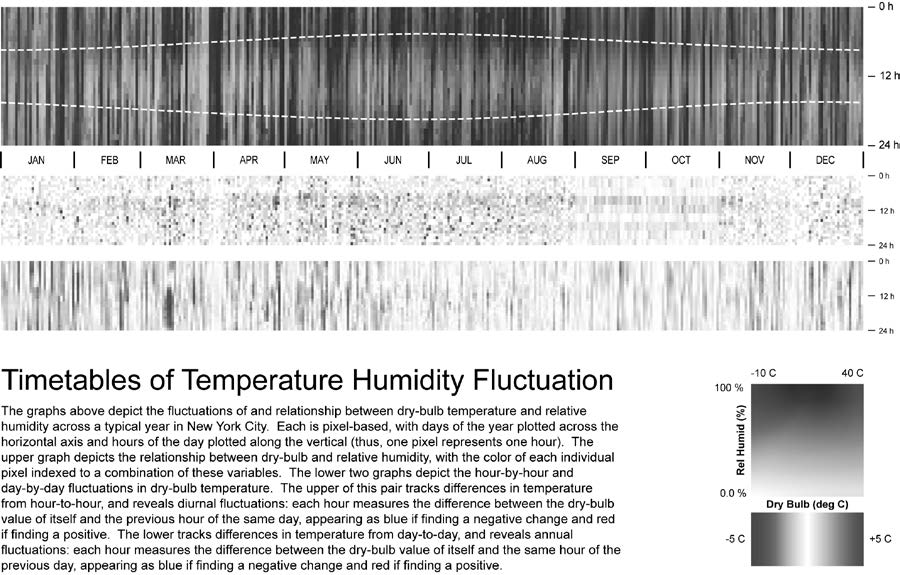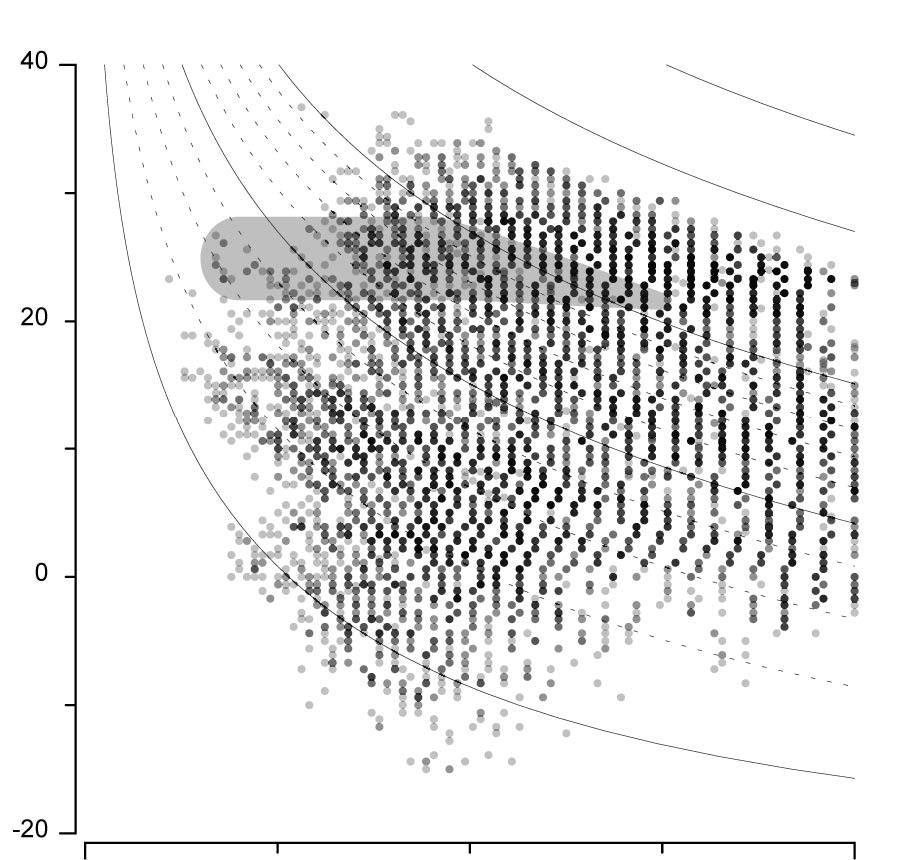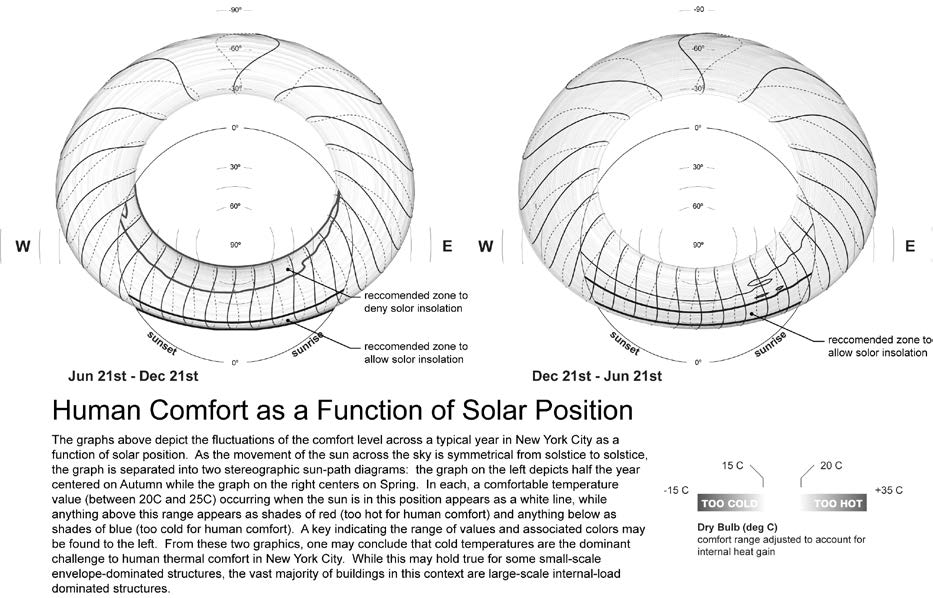Situated Bioclimatic Information Design
A New Approach to the Processing and Visualization of Climate Data
Kyle Steinfeld, Pravin Bhiwapurkar, Anna Dyson, & Jason Vollen
This paper documents the process of developing a custom-built weather data parser, and producing a number of diagrams and data visualizations. These visualizations are not only useful in and of themselves for aligning design strategies to specific contexts, but they also illustrate the foundations of a larger theoretical framework for the processing and visualization of climatic data for effective utilization of bioclimatic flows.

Currently, most approaches to graphic evaluative frameworks (GEFs) for the early-stage evaluation of bioclimatic design strategies adopt a design-tool metaphor, wherein a battery of analytical routines is performed by a software tool based upon a standardized weather file from which a stock set of graphic material is produced. In seeking to evaluate a broad range of climates and to address a wide variety of passive design strategies, existing climate visualization and evaluation tools position themselves far outside of the context of a situated design problem. Remaining agnostic to the particularities of site, program, tectonic system, and material behavior these tools become, by definition, generic. As a consequence, while such design-tools can be effective in evaluating particular relationships between environmental resource, demand profile, and built-system, they maintain a potential to be rendered ineffective in any outlying cases not specifically anticipated by their authors.

Situated Bioclimatic Information Design (SBID) presents an alternative approach that targets a class of design strategies prominent among these outlying cases: those highly responsive to negotiation between the continually fluctuating resources within microclimates and the fluctuating demand profile of the building program.

Read the full paper here.